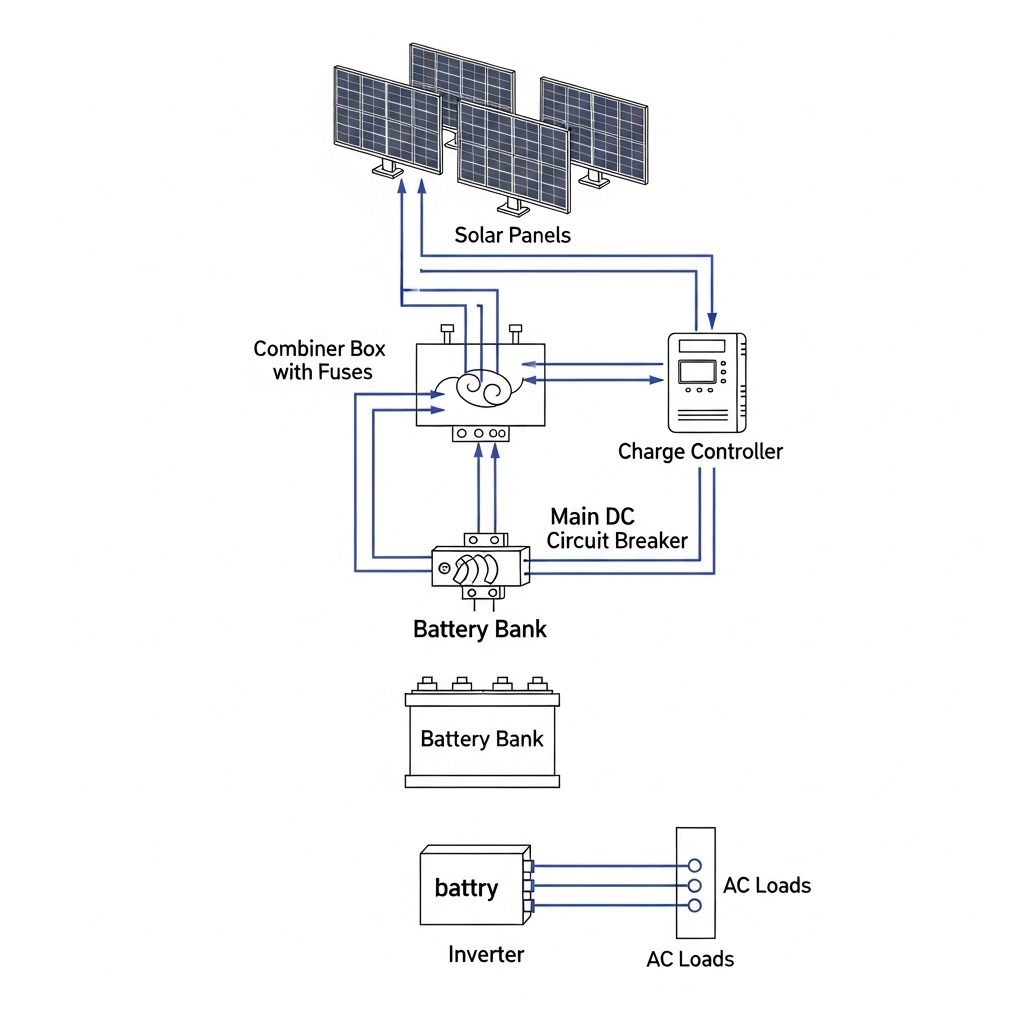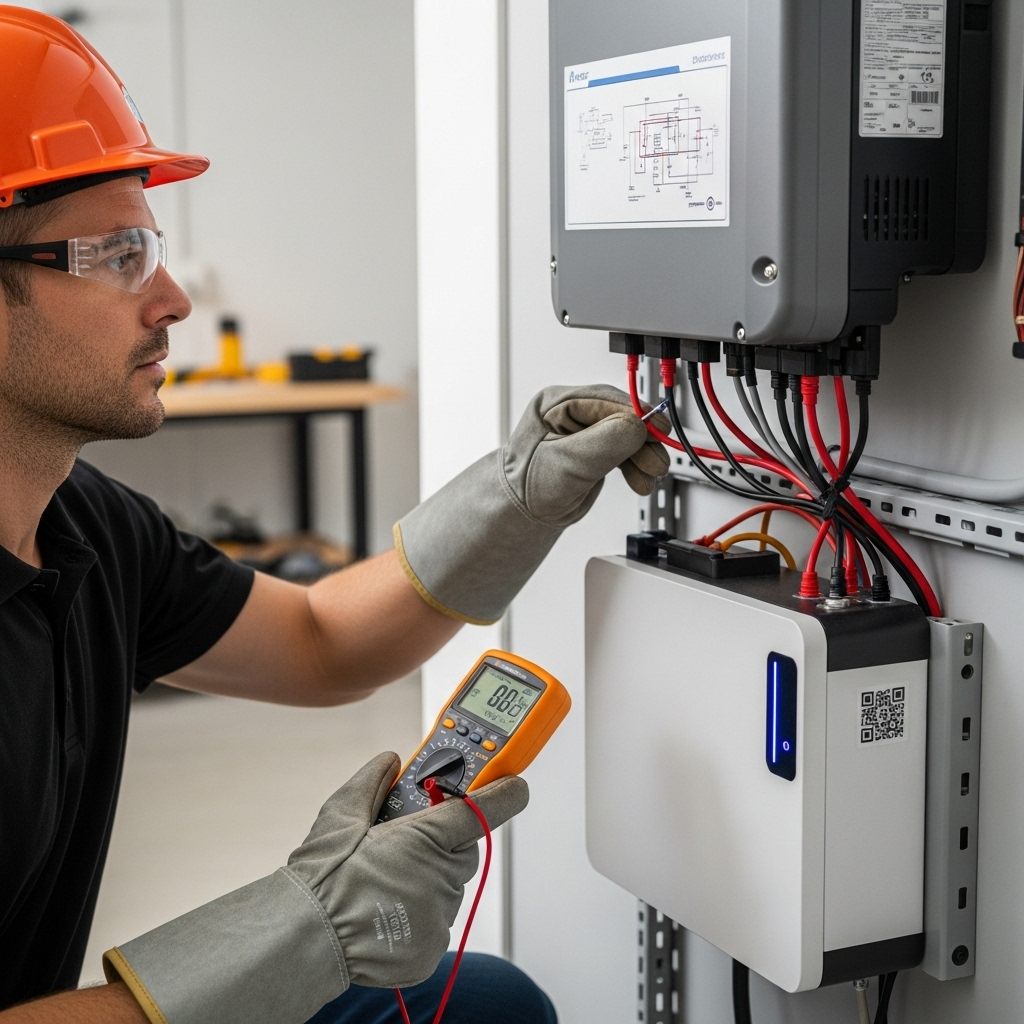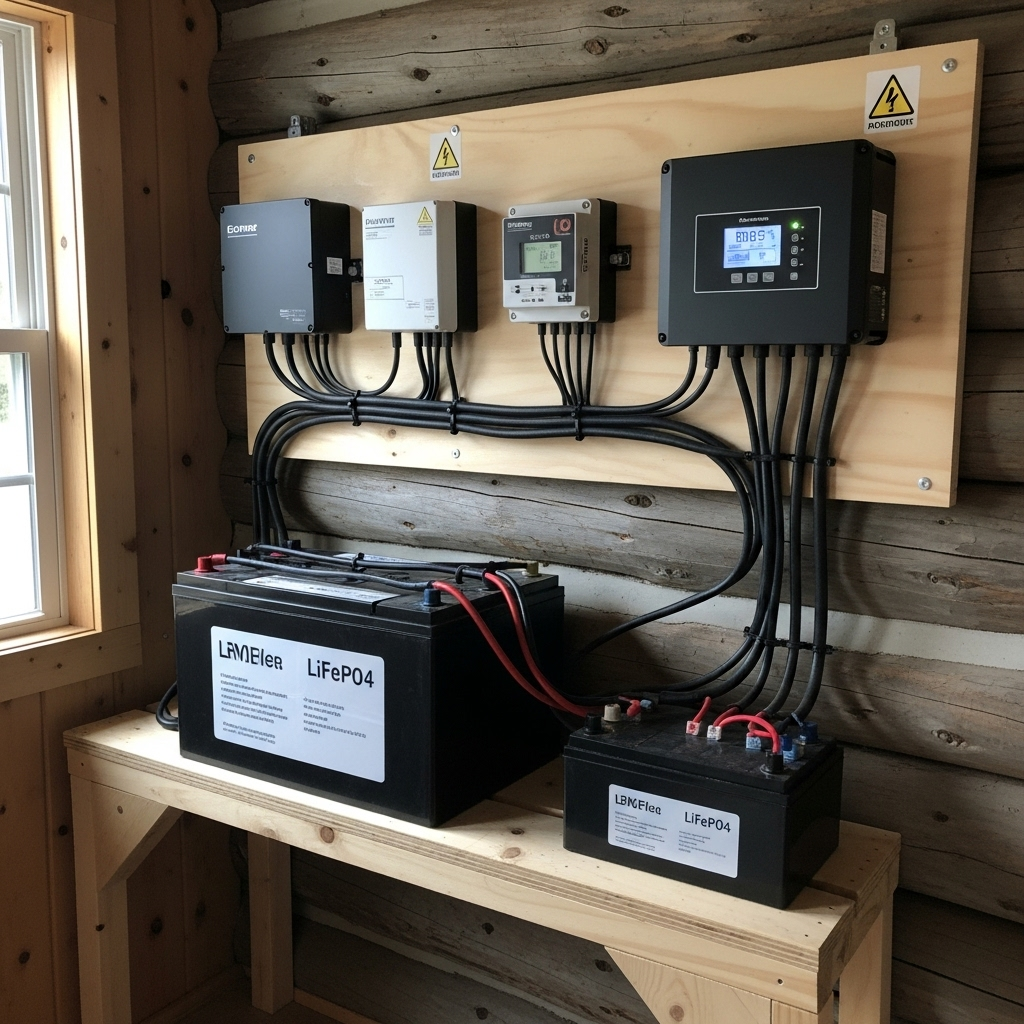Properly wiring a solar energy system is the foundation of its safety, efficiency, and longevity. While selecting panels and batteries often gets the spotlight, the choices you make regarding PV wire gauge, fusing, and overcurrent protection are what safeguard your investment and home. Getting these details right prevents equipment damage and mitigates fire risks, ensuring your system operates reliably for years. This guide provides the essential knowledge for making informed decisions on solar wire sizing and implementing critical electrical safety measures.
Sizing Your PV Wire Gauge Correctly
Selecting the right wire is more than just connecting two points; it's about ensuring that power moves safely and efficiently from your panels to your batteries and inverter. The diameter of the wire, known as its gauge, directly impacts its ability to handle electrical current.
Why Wire Gauge is Critical for Safety and Efficiency
Wire gauge is typically measured using the American Wire Gauge (AWG) standard, where a lower number indicates a thicker wire. Using a wire that is too thin (a higher AWG number) for the current it needs to carry is a significant hazard. The wire can overheat, melt its insulation, and potentially cause a fire. Beyond the immediate safety risk, an undersized wire also leads to voltage drop. This phenomenon occurs as electricity travels along a conductor, losing a small amount of energy as heat. Excessive voltage drop means less power reaches your batteries and inverter, reducing your entire system's performance.
Factors Influencing Wire Gauge Selection
Choosing the correct PV wire gauge involves a few key considerations. You must account for the current the wire will carry, the distance it will span, and the environment in which it will be installed.
Ampacity: The Current-Carrying Capacity
Ampacity is the maximum current a conductor can handle continuously without exceeding its temperature rating. This value is influenced by the wire's gauge, insulation type, and the ambient temperature. The National Electrical Code (NEC) provides detailed tables specifying the ampacity for different wire types and conditions. Always select a wire with an ampacity rating that comfortably exceeds the maximum expected current in that part of your system.
Voltage Drop: Preserving Your Power
For optimal performance, the goal is to keep voltage drop below 3% for any single wire run in your solar installation. As the distance between components increases, so does the voltage drop. To counteract this, you must use a thicker wire. For example, a 100-foot run will require a much thicker wire than a 20-foot run to carry the same amount of current while maintaining an acceptable voltage drop. Careful planning of your component layout can help minimize wire lengths and reduce costs.
| Wire Gauge (AWG) | Ampacity (at 90°C) | Recommended Max Distance for 3% Voltage Drop at 48V (20A) |
|---|---|---|
| 10 AWG | 40A | ~45 feet |
| 8 AWG | 55A | ~70 feet |
| 6 AWG | 75A | ~115 feet |
| 4 AWG | 95A | ~180 feet |
Note: This table is for illustrative purposes. Always calculate for your specific system's voltage and amperage.
The Role of Fuses in Solar Systems
Fuses and other overcurrent protection devices are the essential safety mechanisms in your solar installation. They are designed to be the weak link in the circuit, protecting more expensive components from damaging electrical faults.
What is a Fuse and Why Do You Need It?
A fuse is a simple device containing a small piece of wire that melts and breaks the circuit if the current exceeds a safe level. This action stops the flow of electricity, preventing damage from overloads or short circuits. An overload occurs when equipment draws more current than the circuit is designed for, while a short circuit is a low-resistance path that allows a massive amount of current to flow instantly. Both situations can destroy equipment and create fire hazards if not interrupted. As the International Energy Agency points out in its Solar Energy Perspectives report, electrical protection devices are a fundamental part of the system's hardware.
Selecting the Right Fuse for Your Application
Fuse sizing is not arbitrary; it is based on specific calculations to protect the wiring and components in each part of the system. A fuse that is too small will blow unnecessarily, while one that is too large will fail to protect your equipment.
Fuse Sizing for Solar Panel Strings
For solar panel arrays, the fuse rating is typically calculated by taking the panel's short-circuit current (Isc) and multiplying it by 1.56. This factor accounts for the continuous nature of solar power generation and provides a necessary safety margin. This protection is most critical in systems with three or more parallel strings, where a fault in one string could cause the others to back-feed current into it.
Fuse Sizing for Battery Banks
The main fuse between your battery bank and inverter is one of the most important safety devices in your system. It protects against catastrophic short circuits from the battery, which can deliver thousands of amps. This fuse should be sized based on the ampacity of the wire connecting the battery to the inverter and the inverter's maximum continuous power draw.
Overcurrent Protection Devices (OCPDs)
Overcurrent Protection Devices (OCPDs) is the broad term for fuses and circuit breakers. They are placed at strategic points throughout the solar wiring to isolate faults and protect the entire system. According to reports from institutions like IRENA, proper DC installation and cabling are critical project stages that demand careful attention to safety standards.
Fuses vs. Circuit Breakers
Both fuses and circuit breakers serve the same primary function, but they operate differently. Fuses are single-use and must be replaced after they blow. Circuit breakers are mechanical switches that trip automatically during an overcurrent event and can be manually reset. Breakers also offer the convenience of acting as a disconnect switch for maintenance.
| Feature | Fuse | Circuit Breaker |
|---|---|---|
| Operation | Melts to break circuit | Trips a switch to break circuit |
| Reset | Must be replaced | Can be manually reset |
| Cost | Lower initial cost | Higher initial cost |
| Functionality | Overcurrent protection only | Protection and manual disconnect |
Strategic Placement of OCPDs
Proper placement ensures that each part of your system is protected. A typical DIY solar setup requires OCPDs in several key locations.
Between Panels and Charge Controller
A circuit breaker or fuse here, often housed in a combiner box, protects the charge controller from overcurrent from the solar array and allows you to safely disconnect the panels for maintenance.
Between Charge Controller and Battery Bank
This OCPD protects the wiring and prevents the battery from sending excessive current back to the charge controller in the event of a fault within the controller.
Between Battery Bank and Inverter
This is a critical, high-amperage OCPD (often a Class T fuse or a large DC-rated breaker) that protects against short circuits from the battery, which pose the most significant energy hazard in the system.
Integrating Safety with Performance
A well-designed electrical system does more than just keep you safe; it maximizes the power you get from your solar investment. Every connection, wire, and fuse plays a part in the system's overall efficiency.
Balancing Safety with System Efficiency
Using correctly sized wires and high-quality, low-resistance connectors minimizes energy loss from voltage drop. This ensures that the maximum amount of power generated by your panels reaches your batteries. Efficiently transferring power is crucial for system performance, especially as grid operators work on getting wind and solar onto the grid, where every kilowatt-hour counts. Once your system is safely wired, understanding its output becomes key. Metrics like Depth of Discharge (DoD) and State of Charge (SoC) are vital for battery health and longevity, and you can find a detailed breakdown in this ultimate reference on solar storage performance.
Your Blueprint for a Safe and Reliable System
Building a DIY solar power system is a rewarding project that provides energy independence. However, the safety and reliability of that system depend entirely on the quality of its electrical foundation. Prioritizing correct PV wire gauge, selecting appropriately sized fuses, and strategically placing overcurrent protection devices are non-negotiable steps. These measures protect your components from damage, prevent electrical fires, and ensure your system delivers clean, reliable power for its entire lifespan.
Disclaimer: This guide provides general information and is not a substitute for professional electrical advice. Always consult local electrical codes and a qualified electrician for your specific project. This is not financial or legal advice.
Frequently Asked Questions
Do I need a fuse for a single solar panel?
Generally, no. Fusing is required when you have three or more parallel strings of solar panels. This is to protect against a scenario where multiple strings could back-feed a high level of fault current into a single, malfunctioning string.
What happens if I use a wire gauge that is too small?
An undersized wire presents two major problems. First, it will have higher resistance, causing it to heat up under load, which is a serious fire hazard. Second, it will cause a significant voltage drop, which reduces the amount of power delivered to your batteries and inverter, making your entire system less efficient.
Can I use an AC circuit breaker for a DC circuit?
It is strongly discouraged and generally unsafe. DC electricity is more difficult to interrupt than AC because the voltage does not pass through zero. A DC arc is self-sustaining and harder to extinguish. You should always use DC-rated circuit breakers for DC circuits, as they are specifically designed to handle the constant voltage and safely break the connection under load.





Leave a comment
All comments are moderated before being published.
This site is protected by hCaptcha and the hCaptcha Privacy Policy and Terms of Service apply.